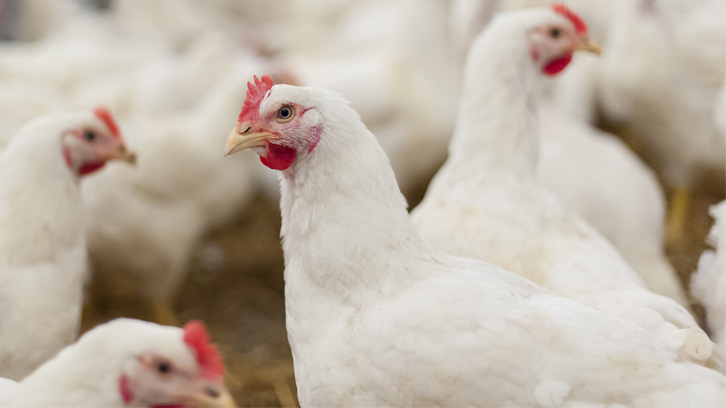Vaccination of chickens to fight hepatitis

Inclusion body hepatitis is an emergent disease in the poultry industry that can cause up to 30% mortality, especially in young fattening chickens. Vaccination is the most effective method against the spread of the disease thanks to the vertical transmission of antibodies. Researchers from the Department of Animal Health and Anatomy, IRTA-CReSA and CESAC have carried out a retrospective study in Spain during the last 10 years. In addition to a sustained use of vaccination, surveillance and serological monitoring are needed to control the disease.
Inclusion body hepatitis (IBH) is an economically important disease for the poultry industry caused by fowl adenovirus. IBH has a worldwide distribution, mainly affecting young fattening chickens, and is characterized by a sudden increase in mortality, which can sometimes reach 30%. Vaccination is the most effective tool for controlling IBH, and its goal is to prevent the transmission of the virus from fattening breeders to their offspring (also known as vertical transmission) and to protect day-old chicks with maternal antibodies.
IBH is considered an emerging disease; in the last two decades, an increasing number of outbreaks have been reported around the world. In Spain in particular, since 2011 there has been a sharp increase in the number of IBH outbreaks in meat farms, placing Catalonia as one of the regions of the State most affected due to the important weight of the poultry sector in this region. The economic losses for the Spanish poultry industry caused by the dramatic increase in IBH cases prompted the use of vaccination in some regions of the country. Thanks to this retrospective study of HCI cases in Spain between 2011 and 2021, we observed that vaccination helped to reduce the number of IBH cases. However, the lack of regularity and sustained use over time of these vaccines prevented the eradication of the disease in the sector.
Our retrospective study also highlights that the majority of cases were reported in broilers (92.21%), while cases in breeder pullets represented a minority. In addition, we note that vertical transmission has been the main route of infection, although horizontal transmission (among birds sharing the same environment) has probably also occurred in some cases. In terms of seasonality, we observe that, while IBH outbreaks were recorded year-long, significantly more cases occurred during the cooler and rainier months. Finally, the geographical distribution of the cases suggests a widespread incidence of IBH in Spain, revealing the importance of a highly integrated system, which is the case of the poultry sector.
Our results contribute to a better understanding of this disease in field conditions and reiterate the importance of surveillance, serological monitoring and vaccination for its control.
Animal Health Research Center IRTA-CReSA
Department of Animal Health and Anatomy, UAB
References
Bertran, K., Blanco, A., Antilles, N., Nofrarías, M., Valle, R. M., Cobos, À., Ramis A., Biarnés M., Majó, N. (2021). A 10-Year Retrospective Study of Inclusion Body Hepatitis in Meat-Type Chickens in Spain (2011–2021). Viruses, 13(11), 2170. doi:10.3390/v13112170


